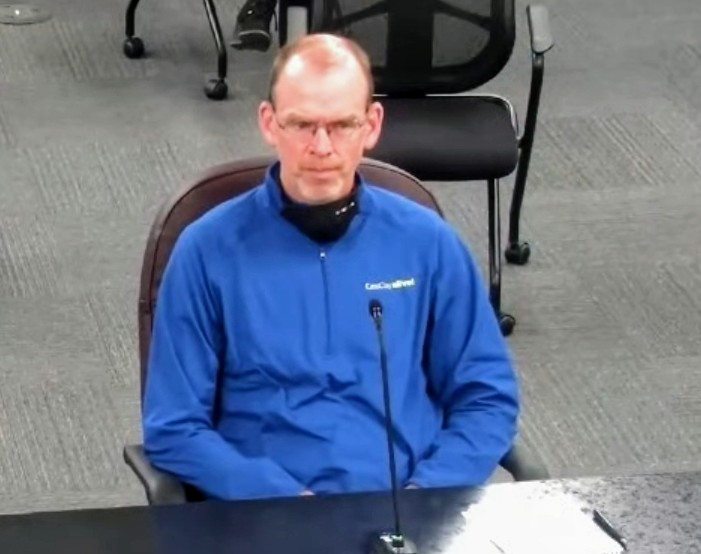county commission
Karen Newman

Public Health Promotion Director Rory Beil reinforces need for updated information as future tobacco ordinance changes are contemplated.
“Cherry Skoal is for someone who likes the taste of candy, if you know what I’m saying.” US Smokeless Tobacco Sales Representative
“We don’t smoke that s____. We just sell it. We reserve the right to smoke for the young, the poor, the black and the stupid.” R.J. Reynolds Executive’s reply when asked why he doesn’t smoke.
“[T]he base of our business is the high school student” Lorillard memo from executive TL Achey
Anticipating upcoming proposals for changes in Clay County’s tobacco ordinances, Rory Beil, Director of Health Promotions, began his presentation to the Clay County Commission’s April 6 meeting, stating, “In public health, we use a phrase, ‘social determinants of health’ often. Our work is to really look at the environmental things, cultural things, things of influence that make it easier for people to make heathy choices in physical activity, eating well, or avoiding the use of tobacco.”
Beil introduced Jason McCoy, Tobacco Prevention Coordinator for Clay County Public Health who also serves Becker, Wilkin, and Ottertail Counties. McCoy introduced his presentation as an overview of flavored tobacco product use in Minnesota with the intent of providing the most current data to the public and to the commission, as they mull over changes to county tobacco ordinances at future meetings.
McCoy began by emphasizing that tobacco products don’t refer to the traditional use of sacred tobacco for religious purposes by Native American groups. Traditional sacred tobacco is made from red willow bark, not the tobacco plant. The Minnesota Department of Health celebrates the use of sacred tobacco.
Tobacco products, as defined by the Food and Drug Administration (FDA) prior to 2016, included only cigarettes, cigars and smokeless tobacco. Since 2016, e-cigarettes (vaping) and hookah have been added to the list. All the products listed contain the tobacco plant itself. Because hookah and e-cigarettes are relatively new products, insofar as tobacco ordinances are concerned, McCoy’s presentation concentrated on the newer products to provide the most updated information for the commission’s ordinance decisions.
College-aged students represent the fastest growing hookah user group in Minnesota, often due to misinformation about health effects, according to the American Lung Association and the Center for Disease Control. A typical one-hour hookah session is the equivalent of chain-smoking 100 cigarettes (5 packs) with the same health risks. Shisha, a mixture of tobacco, molasses, honey and herbs, tastes mild, but passing through the water pipe doesn’t reduce harmful substances. Use of a hookah with an informal group or in a hookah bar also increases the chance of respiratory illness transmission, including Covid-19.
McCoy informed the commissioners that tobacco plants naturally contain carcinogens. If a product contains tobacco as an ingredient, its use represents a health risk. He said, “In the past six years, I’ve gone from talking about cigarettes to talking about vaping almost entirely.” He added that a pod of Juul contains about as much nicotine as a pack of cigarettes. Tobacco companies have expanded production to include vaping materials. In the years 2016 and 2019, groups of Minnesota students were asked if they had vaped in the 30 days prior to the survey.
· 2016 eighth graders=5.7%. 2019 eighth graders=11.1%.
· 2016 ninth graders=9.3%. 2019 ninth graders=16.3%.
· 2016 eleventh graders=17.1%. 2019 eleventh graders=26.4%.
Targeted advertising for tobacco product use increased with the advent of social media advertisements and paid social media influencers. Vape manufacturers emphasize the absence of tar from their products so users aren’t coughing it up, but fail to mention that vaping causes chemical burns in the lungs which can lead to destruction of the respiratory system.
Urging the county commission to reflect on the information presented as tobacco ordinance changes come before them, McCoy concluded, “It’s hard to become a five pack a day smoker. It’s really easy to do that with vaping.”

